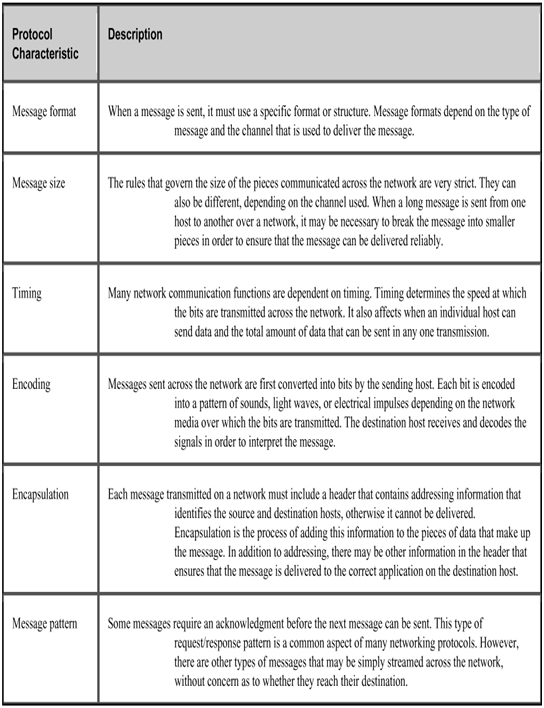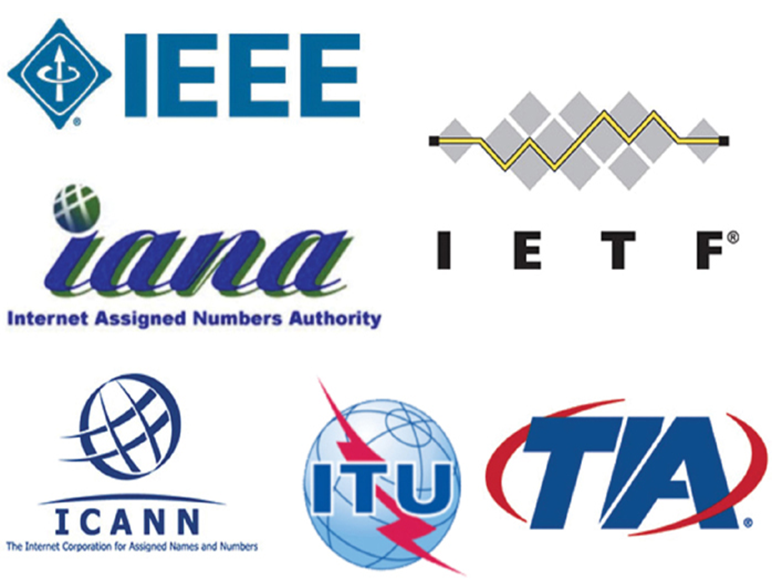Just like humans, computers use rules, or protocols, in order to communicate. Protocols are required for computers to properly communicate across the network. In both a wired and wireless environment, a local network is defined as an area where all hosts must “speak the same language”, which, in computer terms means they must “share a common protocol”.
If everyone in the same room spoke a different language, they would not be able to communicate. Likewise, if devices in a local network did not use the same protocols, they would not be able to communicate.
Networking protocols define many aspects of communication over the local network. As shown in Table 5-1, these include message format, message size, timing, encoding, encapsulation, and message patterns.

Table 5-1 Protocol Characteristics
Communication standards are required in all aspects of human communications such as when addressing an envelope. There is a standard regarding in the placement of the sender’s address, destination address and even where you put the stamp. Network communications also requires standards to ensure that all the devices in the network are using the same rules to send and receive information.
The Internet and Standards (5.2.2)
With the increasing number of new devices and technologies coming online, how is it possible to manage all the changes and still reliably deliver services such as email? The answer is internet standards.
A standard is a set of rules that determines how something must be done. Networking and internet standards ensure that all devices connecting to the network implement the same set of rules or protocols in the same manner. Using standards, it is possible for different types of devices to send information to each other over the internet. For example, the way in which an email is formatted, forwarded, and received by all devices is done according to a standard. If one person sends an email via a personal computer, another person can use a mobile phone to receive and read the email as long as the mobile phone uses the same standards as the personal computer.
Network Standards Organizations (5.2.3)
An internet standard is the end result of a comprehensive cycle of discussion, problem solving, and testing. These different standards are developed, published, and maintained by a variety of organizations, as shown in the figure. When a new standard is proposed, each stage of the development and approval process is recorded in a numbered Request for Comments (RFC) document so that the evolution of the standard is tracked. RFCs for internet standards are published and managed by the Internet Engineering Task Force (IETF).
Other standards organizations that support the internet are shown in the Figure 5-4.

Figure 5-4 Internet Standards Organizations
